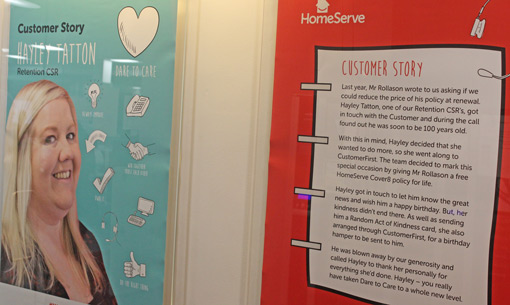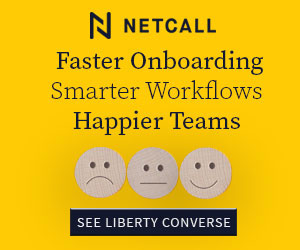We ask five key questions to help you assess whether or not you are managing customer expectations before sharing interesting methods for exceeding them.
5 Questions to Help You Better Manage Expectations
Before you can think about exceeding customer expectations, you need to know what your customers’ expectations of you are and manage them carefully.
What will exceed the expectations for one customer base will not do so for others. So you need to ensure that you are meeting current expectations first and then look for opportunities to exceed them.
If you jump straight into exceeding certain customers’ expectations, you will create an image of your company that will be difficult to sustain if you don’t have a management system to support them.
With this in mind, consider the following five questions. If you can confidently say “yes” to each one, you will develop customer trust and ensure that you are not promising customers one thing and delivering another.
1. What Are Your Customers’ Expectations?
To manage customer expectations, you first need to define them. You can do this by assessing your brand proposition and researching who your customers are and what’s important to them.
You can then characterize your audience into separate 6-8 personas and assess which specific values really matter to them. From these values, alongside your brand image, you can draw out expectations.
After, through customer research activities – such as mystery shopping, focus groups and Voice of the Customer (VoC) research – you can gain a better idea of whether or not you are meeting these.
You should have an idea of the experience your customers want to have, the emotions that they want to feel and how closely you are meeting their expectations.
By the end of this process, you should have an idea of the experience your customers want to have, the emotions that they want to feel and how closely you are meeting their expectations.
Just one final point here, you need to be assessing how customer expectations change over time too, as you cannot expect them to stay as they are now forever.
2. What Promises Are You Making to Customers?
Customer expectations are set by marketing and branding activity, alongside previous experiences. So, the whole organization needs to be sending out a unified message.
This highlights the importance of clarifying customer expectations and ensuring that your contact centre works towards the same set of customer promises as every other department. Everyone needs to be singing from the same hymn sheet.
Unclear expectations will cause misunderstandings, which lead to disappointment and withdrawals of trust.
Unclear expectations will cause misunderstandings, which lead to disappointment and withdrawals of trust. Even the most simple misunderstanding will cause problems that the contact centre will have to clean up.
So, from your research into the values of your customer base, find common themes. Then, as an organization, turn these themes into promises and commitments, and make sure you keep them. This will help to manage customer expectations.
3. Do You Keep the Commitments That You Make?
If marketing is making your customer promises public, you need to do all that you can to keep those. After all, there is no greater loss of trust than when someone does not keep a promise.
With this in mind, you need to be focused on ensuring that you stick to agreed times for returning calls, making deliveries and so on. If you agree a deadline, you must stick to it, in order to best manage customer expectations.

If you agree to a deadline, you must stick to it, in order to best manage customer expectations.
So, be realistic with your deadlines. If advisors have to inform customers of a delay, it’s always better to overestimate than underestimate. While it may not be great for the customer at first, it gives you a great opportunity to exceed expectations later.
Also, to ensure that you are hitting expectations at an organization-wide level, a mystery shopping exercise can work well, as you travel through your customer journeys to assess if you are hitting your key customer promises and commitments at every touchpoint.
4. Do Your Customers Know What Is Expected of Them?
Something that not enough organizations think about when managing expectations is whether or not their product/service is negatively influenced by user error.
We too often think about making the customer experience as non-intrusive as possible to remove friction points when sometimes customers may need that extra bit of guidance.
If there are certain steps that the customer needs to follow for an automated online process, has the customer got everything they need for this process to run as smoothly as possible?
For example, if there are certain steps that the customer needs to follow for an automated online process, has the customer got everything they need for this process to run as smoothly as possible? And is there a simple escalation path if something does go wrong?
With businesses following the Amazon approach of making things as easy as possible for customers, you need to aware of areas of user error and correct it immediately, as modern customers will bring Amazon-like expectations with them.
5. Do You Admit It When You Are Wrong?
It’s bad enough to make a mistake, but denying the mistake is far worse. When you do this, you alienate the customer from your values and their expectations of you.
You need to acknowledge the customer first, thank them for bringing the matter to your attention and listen carefully. If you are wrong, then a sincere apology is needed.
When you follow a procedure like this and show empathy, most customers will just accept that these things can go wrong from time to time and will just ask for better communication.
The trouble often comes when advisors who are proud to represent your organization get too defensive over the brand.
However, the trouble often comes when advisors who are proud to represent your organization get too defensive over the brand. This causes friction with the customer and challenges their expectations of your brand, as it would not be the tone they were expecting when they picked up the phone.
So encourage advisors to be honest with customers and to offer explanations, not excuses. This starts with leaders openly admitting when they make mistakes, so you embed transparency into your culture. That helps to manage both advisor and customer expectations.
For more tips on the topic of contact centre leadership, read our article: Train Team Leaders Well
Bonus Tip – Talk to Your Team About How They Manage Customer Expectations
While each of the questions above came with some advice for managing customer expectations in the contact centre, the biggest thing you can do is review your customer promises with your team.
When doing this, it’s great to ask advisors if they ever say or do anything that that could lead to customers having expectations that are beyond what you, as an organization, can deliver?
It may be easier for advisors to say things to customers that will please them initially in order to get them off the phone than it is to set more realistic expectations.
If advisors do this, management of these now amplified customer expectations becomes a trickier task, as does exceeding them…
6 Best Practices to Exceed Customer Expectations
Now you have started to manage customer expectations, you can think – with greater insight – about how you can exceed those expectations.
Doing the management part first is crucial, as exceeding expectations in some areas and failing to meet others will disillusion customers with your brand.
However, if you can exceed certain expectations, while actively managing others, you can create happier customers.
1. Have a Great Vulnerable Customer Programme
When it comes to exceeding customer expectations, it’s great to follow the old adage “do one thing really well’, and a vulnerable customer programme is a great thing to get right.
If you treat vulnerable customers exceedingly well, you will secure their business, while their immediate friends and family will be really grateful and more likely to do business with you too.

Jacqui Workman
However, it’s a tricky thing to get right as identifying these vulnerabilities is tricky, and vulnerability can either be temporary or permanent, as Jacqui Workman, the Managing Director of KMB, tells us.
“If someone has suffered a bereavement, their vulnerability is likely only temporary, while a dementia diagnosis is permanent,” Jacqui says.
Because there are so many challenges like this when dealing with vulnerable customers, many companies have lax policies in this area.
So, by making a rigorous vulnerable customer policy, you can separate yourself from your competition and support people who are too often neglected, all while exceeding their expectations – and those of their loved ones.
For more about creating a plan for offering excellent service to vulnerable customers from Jacqui herself, read our article: Dealing With Vulnerable Customers
2. Share Call Recordings Where Advisors Have Delighted Customers
More often than not, the best tactics to use to delight customers are those with a proven track record within your business. It’s just in identifying those tactics where the troubles lie.
While you can ask advisors what they have done to improve customer expectations, you will likely get lots of feedback of varying usage.
So look out for those moments when customers write to you with a piece of great feedback or even send in a thank-you card or gift to an advisor.
Then listen to the call and talk to the advisor to find out what they did so well to exceed the customer’s expectations, and share their story.
Giving these examples for how to bring the principle of “exceeding customer expectations” to life will encourage advisors to do the same – particularly if the advisor’s efforts are shown to be recognized and celebrated.
One way to do this is to write up the story and frame it on the contact centre wall, just like HomeServe do in their contact centre in Walsall, as shown below:

Here’s an example of how HomeServe spread positive stories of advisors going the extra mile for customers.
For more best practices like this, read our article: 12 Ideas Taken from HomeServe’s Contact Centre
3. Train Advisors to Take Ownership (And Ensure Nothing Gets in Their Way!)
To really exceed expectations when customers call in with a problem, the advisor has to take full control of the issue and, when possible, make a commitment to the customer.
By doing this you manage expectations by rebuilding the customer’s trust in you as an organization. If you can make a commitment and then surpass that commitment, you clearly reset and exceed the customer’s expectations.
You can teach helpful tips, such as how best to use personal pronouns, but you need to first assess how easy it is for advisors to do something out of the ordinary to exceed the customer’s expectations.
However, asking advisors to take ownership of a call is easier said than done. Sure, you can teach helpful tips, such as how best to use personal pronouns, but you need to first assess how easy it is for advisors to do something out of the ordinary to exceed the customer’s expectations.
Often, advisors won’t try to exceed customer expectations because they believe that processes will get in their way. But by encouraging the team to give it a go and report back if something deters their progress, you will significantly boost your odds of exceeding customer expectations.
So again this comes back to good contact centre leadership and good education of the avenues that are available to advisors when they wish to do something special for the customer.
4. Follow Up After Negative Experiences
To separate your organization from its competitors, it’s great to find out what you offer that’s better than them and really flaunt that within your customer experience – to exceed their expectations of a company within your field.
As an example of this, your company will really stand out if you have direct customer feedback systems, as 99% of organizations fail to adequately manage the feedback they collect.
While it can work well in building relationships with neutral customers and leveraging relationships with promoters of your business, it is by responding very well and directly to negative feedback where you can exceed expectations.
Remember, negative experiences offer a great opportunity for positive emotion and if you can respond to a low CSat score, solve the problem and blow their socks off, you can not only recover the situation, but exceed expectations in the process.

Guy Arnold
This strategy is recommended by Guy Arnold, Founder of Slow Selling, who says: “If you ask for feedback and the customer says: “This is terrible,” and they don’t get any sort of response, it would have been better if you hadn’t asked for the feedback in the first place.”
“When you do this, as most organizations do, you’ve not only proved to be incompetent, but you’ve proved that you don’t care.”
So, show a human side and show that you care, by systematically responding to negative feedback and systemically exceeding the customer’s expectations, by doing this small something that almost all other companies do not.
5. Make Notes of the Personal Things
Customers will often give you insights into their family life, interests and other personal information.
An advisor who has been trained well will be able use these nuggets of information and use them to get personal with the customer.
Also, the advisor can enter these pieces of information into the CRM, so other members of the team have more information on who that customer is. This helps them to better build rapport and understand customer preferences.
But when you make note of these personal things, you can not only improve customer service, you can take it one step further and really exceed customer expectations.
The best example that I have seen of this was during a site visit to the FatFace contact centre in Havant. This story shows how, by getting personal, advisors can truly exceed expectations:
A member of the FatFace team had a conversation with a customer who had recently had a mastectomy. She loved a blouse that she bought, but had anxiety over wearing it after the surgery.
So, the team member got in touch with the design team, who put together some scarves to go with the blouse, especially for her.
The customer was very happy and sent in the following card to the contact centre.

For more examples of excellent customer service, read our article: 10 Examples of Exceptional Customer Service
6. Send the Customer a Birthday Card
The contact centre is a great source of customer insight and information. This presents a great opportunity to utilize this knowledge to delight customers.
For example, if you have the customer’s birth date on file, you can send them a birthday card and use this as an opportunity to re-engage them with your business.
Not only can this be a great customer engagement strategy, it will give the customer a nice surprise at a time of celebration for them. This will exceed the customer’s expectations and may also give a small, unexpected boost to their emotional connection with you company.
In Summary
Managing customer expectations is key, as you cannot focus all your efforts on going the extra mile and not pay adequate attention to the original mile.
So, if you cannot answer the five questions presented at the start of this article confidently, this is where you need to start. The advice underneath each question should provide some helpful advice for doing so.
However, if you are confident in your management of customer expectations, you can then think about exceeding them, and this is where you can get creative.
One good piece of advice is to ensure that you do one thing really well and flaunt that. But if you’re stuck for ideas, the six best practices in the article should hold you in good stead.
Good luck!
For more on understanding and exceeding customer expectations and how you can do so, read our articles:
- How to Set the Right Expectations on a Call
- How Are Customer Expectations Changing and What Does That Mean for Us?
- Top 10 Tips for Exceeding Customer Expectations
Author: Robyn Coppell
Published On: 27th Nov 2019 - Last modified: 18th Aug 2025
Read more about - Call Centre Management, Customer Expectations, Customer Experience (CX), Customer Service, Editor's Picks, Handling Customers, Jacqui Workman, Management Strategies










































